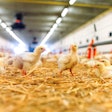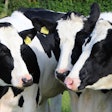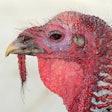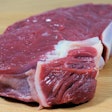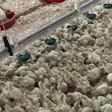When applying India’s traditional herbal applications to animal nutrition, this statement rings true: “a healthy seed produces healthy fruits.” In other words, healthy animals produce healthy products. The challenge is how to apply this ancient expertise to today’s high-production animals.
The reintroduction of herbs into the daily “menu” of our livestock may help meet new demands of the industry and the consumer. Healthy animals do not have to be medicated. This saves costs and makes the production of animal products profitable, while also fitting perfectly to consumer demands.

Alfred Michel | A look at different plants and their healing and health properties.
Herbal bio-complexes, andrographolidesand liver function
Herbal bio-complexes are in the tradition of India vegetable mixtures contributing with their active interaction between nutrients and secondary metabolites to support the health balance of the animals. They act directly on key organs. This knowledge is based on a number of distinct plants. Among them, as an example, Andrographis paniculata (Acanthaceae) and Azadirachta indica (Meliaceae) are supposed to support liver metabolism and immunity.
Andrographolides are active compounds of Andrographis paniculata. Their hepatoprotective power is proven. These compounds showed a considerable protective activity in vitro against paracetamol-induced toxicity on isolated liver cells.
In a second test, it was evaluated to antagonize the toxic effect of paracetamol on certain enzymes (GOT, GPT and alkaline phosphatase).
The andrographolides were also found to be more potent than silymarin, the active compound of Silybum marianum (milk thistle), a standard hepatoprotective agent.
In a series of trials with broilers under universal and practical conditions, choline and betaine were replaced by a specific herbal mixture formulated with pure herbs mentioned above. Feed intake was improved by 1.56 percent, growth rate by 2.70 percent, feed conversion by -1.29 percent and a lower mortality of 17.60 percent was noted.
Future of herbs in feed
Animal performance and welfare is not dependent on single molecules or extracts in the formulation, because we do not know in detail what they really need in a certain phase of their development. Herbal mixtures with a broad spectrum of secondary plant substances cover animal needs in a more adapted way. They have properties to improve digestibility; are antimicrobial and anti-inflammatory, anti-oxidant and immune stimulant.

Alfred Michel | Meadows offer a wide variety of plants rich in secondary plant components.
Mixtures of whole herbs will be a key to unlock the full genetic potential of modern breeds and cover the high expectations of consumers for tasty and healthy food. In addition, the development of resistances of pathogens against widely used drugs will accelerate the application of herbal mixtures in animal nutrition and will have a leading role in future developments.
References available upon request.





